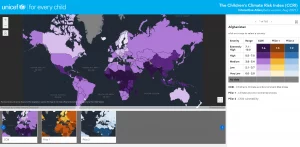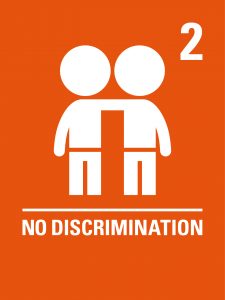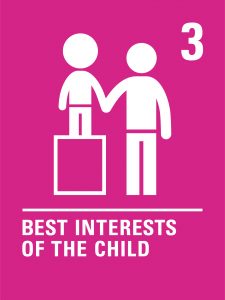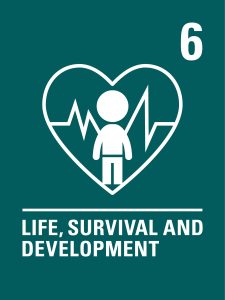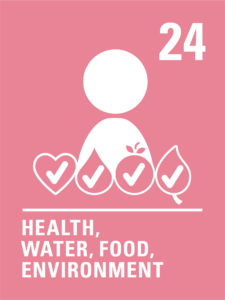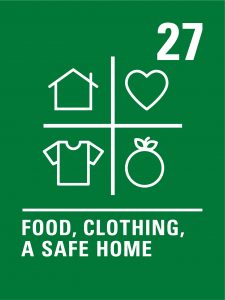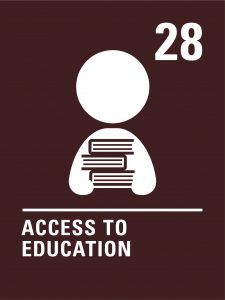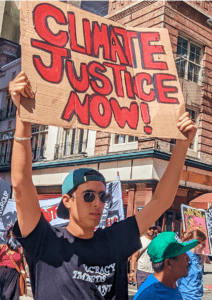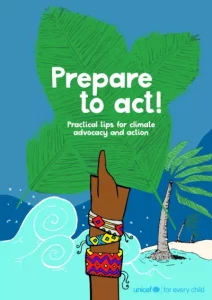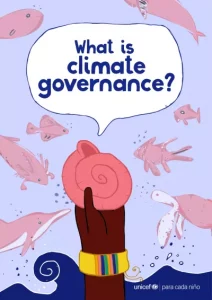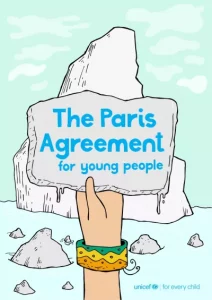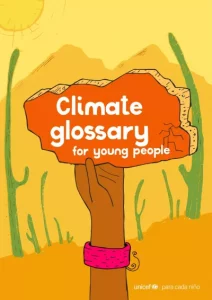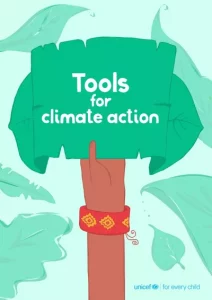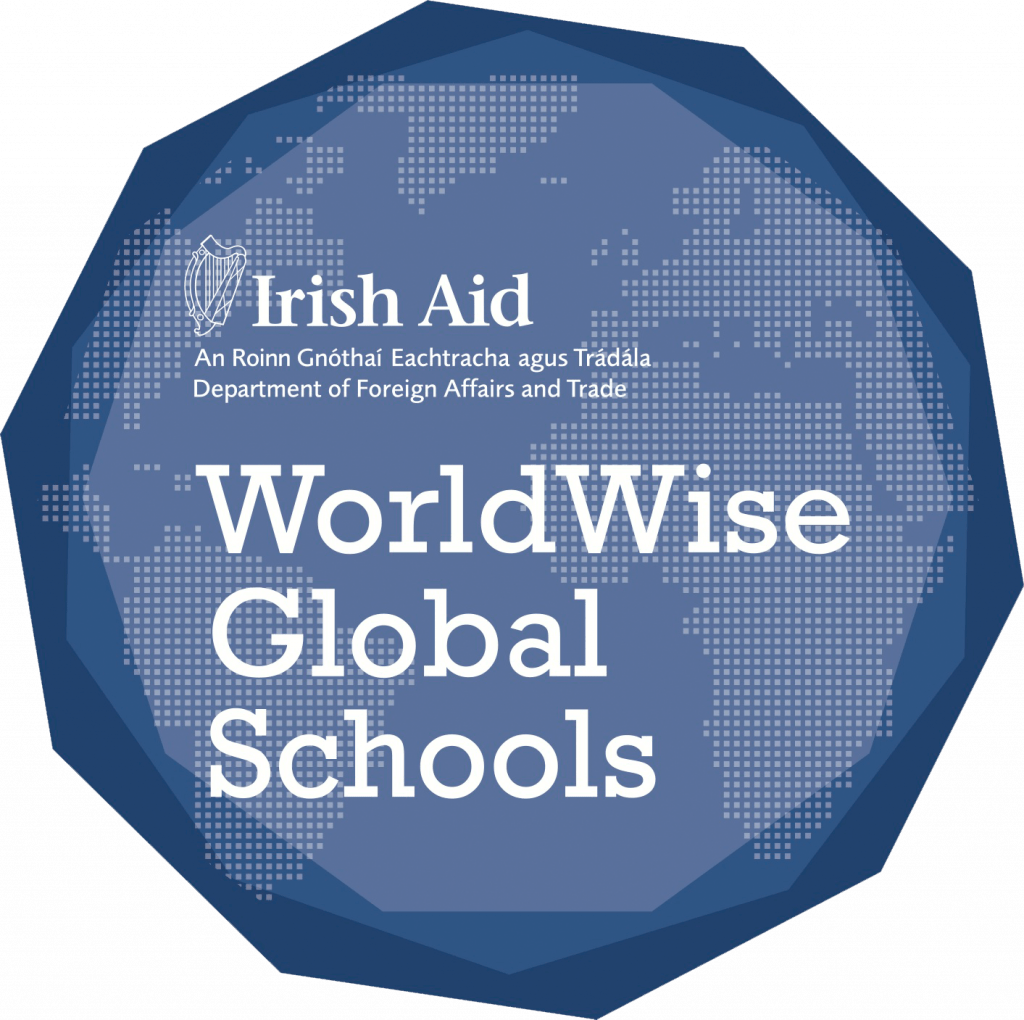Climate Crisis
The Climate Crisis – Climate change represents a critical child rights crisis, profoundly affecting the well-being of children globally. Essential needs such as health, food, water, clean air, and education are significantly compromised by its impact. With the proliferation of extreme weather events worldwide, more children find themselves in life-threatening situations annually, contributing to the tragic loss of 1.7 million children under the age of five each year due to environmental factors. These events not only present immediate dangers but also imperil children’s futures. Floods obliterate schools and health clinics, disrupting access to education and healthcare. Droughts force children to spend extensive hours fetching water, thereby reducing their time in school. Additionally, rising sea levels and air pollution create hazardous environments for children to grow up in, endangering their health and safety. The ramifications of the climate crisis are felt disproportionately by children.
Workshop Activities
| Activity 1 | Kahoot Quiz Understanding the Climate Crisis | 10 Mins |
| Activity 2 | Vulnerability Walk | 30 Mins |
| Activity 3 | Climate Solutions Pitch | 40 Mins |
UNICEF’s research entitled The Children’s Climate Risk Index (CCRI) reveals:
- 240 million children are highly exposed to coastal flooding;
- 330 million children are highly exposed to riverine flooding;
- 400 million children are highly exposed to cyclones;
- 600 million children are highly exposed to vector-borne diseases;
- 815 million children are highly exposed to lead pollution;
- 820 million children are highly exposed to heatwaves;
- 920 million children are highly exposed to water scarcity;
- 1 billion children are highly exposed to exceedingly high levels of air pollution
Surprisingly, those most vulnerable and living in high-risk areas contribute minimally to global greenhouse gas emissions, with the bulk originating from a handful of top emitting countries.
At the end of these activities, participants will have a deeper understanding of the challenges faced by children and their families due to the climate crisis and how it directly affects their daily lives. Moreover, they will develop an understanding of the need to advocate for children’s rights, with a special focus on climate justice when participating in discussions related to the EU and local elections.
Resources
-
Terminology – Climate
-
Download Copy of UNICEF’s Election Guide
-
Ireland’s Adaptation platform by EPA Climate Ireland
-
Informative Website NASA Climate Change Information
-
UNICEF’s Climate Resources for Activists
-
The World Counts
Why is this an Election issue?
The issue of climate change, as highlighted by the recent ‘red alert’ issued by the World Meteorological Organisation (WMO), is of paramount importance for young people to care about. With every major global climate record being shattered last year and projections indicating that 2024 could be even worse, the urgency of addressing climate change cannot be overstated.
Young people are particularly vulnerable to the long-term consequences of climate change, as they will inherit a planet profoundly altered by environmental degradation, extreme weather events, and rising sea levels. Bad weather like storms, floods, and wildfires is happening more often as a result. In 2022, 85,000 people across 16 EU countries were displaced from their homes due to weather-related disasters. This figure will include many thousands of children in the EU. While this scale of displacement is relatively small compared to an average (2016-21) of over 7 million children displaced annually across the globe, the risk of such events and extended impacts in Europe is increasing, as outlined in UNICEF’s The State of Children in the European Union Report 2019-2024.
Irish young people should think about the climate crisis when they consider the upcoming EU and local elections for multiple reasons:
- Global Nature of Climate Change: Climate change is a global challenge that requires international cooperation. The European Union plays a crucial role in coordinating efforts to address climate change on a larger scale, as environmental issues often transcend national borders.
- Climate Targets and Commitments: The European Union has set ambitious climate targets, such as the goal to become climate-neutral by 2050. Decisions made at the EU level must be translated in to local actions. Young people’s involvement in elections ensures that representatives are committed to achieving these goals.
- Funding and Support: The EU provides financial support and resources to member states to implement sustainable practices and address climate-related challenges. Local officials implement those practices to make them a reality in your communities.
- Policy Coherence: Climate action is not only an environmental concern but also intersects with various policy areas, including energy, transportation, and agriculture. EU decisions on these policy areas have a direct impact on Ireland’s ability to transition to a low-carbon economy. Young people’s engagement in elections ensures a coherent and integrated approach to climate policies.
- Local Impact: While global efforts are crucial, the impact of climate change is often felt most directly at the local level. Local elections provide an opportunity to address specific issues related to climate change, such as sustainable urban planning, public transportation, waste management, and local environmental conservation efforts.
Why is this a Child Rights issue?
Right to a Safe Home: The climate crisis contributes to extreme weather events, rising sea levels, and natural disasters, leading to displacement and loss of homes for many families. Children, in particular, are vulnerable to the impacts of climate-induced displacement, jeopardizing their right to a stable and secure home.
Right to a Healthy Planet: The degradation of the environment due to climate change poses a direct threat to children’s right to grow up in a healthy and sustainable environment. Increased air pollution, water scarcity, and exposure to hazardous conditions can negatively impact children’s physical health and well-being.
Best Interest of the Child: The long-term consequences of climate change, including ecological disruptions, biodiversity loss, and resource scarcity, jeopardize children’s right to a sustainable future. Failure to address the climate crisis now could lead to a world that is less habitable, less resilient, and less able to support future generations. Decisions being made now are not in line with the best interests of children, now and in the future.
Right to Education: Climate-related events, such as extreme weather conditions, can disrupt education systems, affecting children’s right to quality education. Displacement, damage to infrastructure, and changes in local conditions can hinder children’s access to learning opportunities.
Disproportionate Impacts on Vulnerable Communities: Vulnerable communities, often with children at the forefront, bear the brunt of climate change impacts. These communities may lack the resources to adapt, exacerbating existing inequalities and compromising children’s rights to equality and non-discrimination.
Right to Participate in Decision-Making: Children have a right to participate in decisions that affect their lives. The climate crisis, with its profound implications for their future, demands that children’s voices and perspectives be considered in policymaking and climate action.
Interconnected Human Rights: The impacts of the climate crisis intersect with various human rights, including the right to health, adequate standard of living, and cultural rights. Addressing the climate crisis is not only an environmental imperative but also a human rights imperative, ensuring the protection of children’s rights across multiple dimensions.
Activity 1 – Kahoot Quiz Understanding the Climate Crisis
Duration: 10 Mins
Activity 2 – Vulnerability Walk
Duration: 30 Mins
Vulnerability Walk – “Who is most vulnerable to climate change?”
- Hand out profile cards 1-10 and profile cards 11-20 to each participant, explain that their card is a story of a real life person who has recently experienced a climate related emergency that has had a significant impact on their life.
- Ask participants to read the story and reflect on the emotional and practical challenges involved in recovering from the event.
- Get participants to line up at the back of the class in an even line.
- Read out the 20 questions and ask students to step forward if they can answer yes to the question.
- When all questions have been read, ask participants to look around the room at their location in respect to the other participants. Carry out a discussion with the group using these discussion prompts.
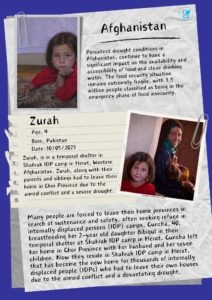
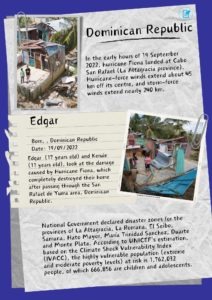
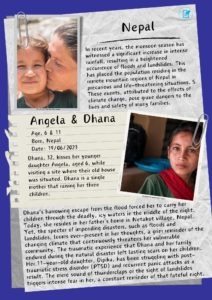
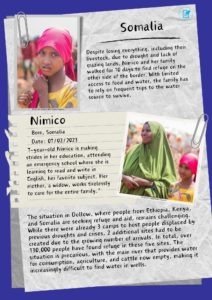
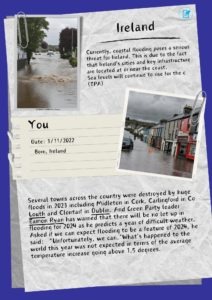
Activity 3 – Climate Solutions Pitch
Duration: 40 Mins
Divide participants in to five groups, each group is to watch a 10-12 minute video on a possible solution for reducing emissions (this can be pre-assigned)
Watch suggested videos:
Energy
How can we harness the power of various forms of energy to catalyse systemic change in combating climate change? From renewable sources like solar and wind to innovative technologies in nuclear and geothermal energy, each presents unique opportunities to reshape our energy landscape. Which forms hold the greatest potential to drive widespread adoption, reduce emissions, and pave the way towards a sustainable future for generations to come?
ENERGY “The Future of Solid State Wind Energy – No More Blades”
Food
How can we revolutionise our food systems to mitigate climate change and ensure global food security? From regenerative agriculture practices to plant-based alternatives and reducing food waste, which strategies hold the most promise for reducing greenhouse gas emissions, preserving biodiversity, and promoting sustainable food production and consumption?
FOOD “Fermenting: the future of animal-free meat?”
Manufacturing
What transformative measures can industry take to decarbonize and transition towards a low-carbon economy? From implementing energy-efficient technologies and circular economy principles to embracing innovative approaches like Biofabrication, which utilizes biological processes to produce sustainable materials, which strategies offer the greatest potential for reducing industrial emissions and fostering sustainable production practices on a global scale?
MANUFACTURING “Why ‘Biofabrication’ is the next industrial revolution”
Construction
How can the construction industry embrace sustainable practices to address climate change and promote resilience in the built environment? Whether through green building standards, energy-efficient design principles, or the use of low-carbon materials and construction techniques, which approaches have the potential to minimize the carbon footprint of buildings and infrastructure while enhancing their durability, adaptability, and environmental performance?
CONSTRUCTION “The Natural Building Blocks of Sustainable Architecture”
Transport
In the quest to achieve sustainable mobility, what innovative solutions can revolutionize our transportation systems and mitigate the environmental impact of travel? From electrification and fuel efficiency improvements to promoting public transportation and embracing alternative fuels, which strategies hold the key to reducing emissions, alleviating congestion, and creating more resilient and equitable transportation networks for communities worldwide?
TRANSPORT “How Paris is Leading a Sustainable Transportation Revolution”
Group Discussion: After watching the video, provide each group with 10 minutes to discuss and evaluate the proposed solution. Encourage participants to consider the feasibility of implementation, the scalability of the solution, and its potential impact on addressing climate change.
Presentation: Each group presents their evaluation of the proposed solution. Groups can either pitch the solution if they believe it is viable or explain why they think it may not work. Facilitate a brief discussion after each presentation to further explore the proposed solution and the questions raised.
Wider Group Discussion: Ask participants to formulate questions they could ask candidates in the lead up to the election.
For example:
- Energy: What steps are being taken to ensure equitable access to clean energy solutions for all communities, including those in underserved areas?
- Food: What measures are being taken to promote the development and adoption of alternative protein sources such as animal-free meat in Ireland?
- Manufacturing: In Europe, how will your party support the adoption of sustainable manufacturing practices and technologies to reduce carbon emissions?
- Transport: What policies does your party promote to ensure transportation systems are accessible and inclusive for everyone, including those with limited mobility?
- Construction: How do you plan to address the affordability and accessibility of sustainable housing options for residents in our region?
Homework/Extension Activity: Encourage participants to learn more about proven solutions at Project Drawdown and suggest they research current climate policies and initiatives at Climate Ireland. They can also explore opportunities for engaging with policymakers, advocating for supportive policies, and raising awareness about the importance of addressing climate change.
This activity can help your school achieve a Global Passport Award. Learn more or apply at WWGS’s Global Passport Award.
Funded by Irish Aid’s WorldWise Global Schools – contents are the responsibility of its author and do not necessarily represent or reflect WWGS and or Irish Aid policy.
